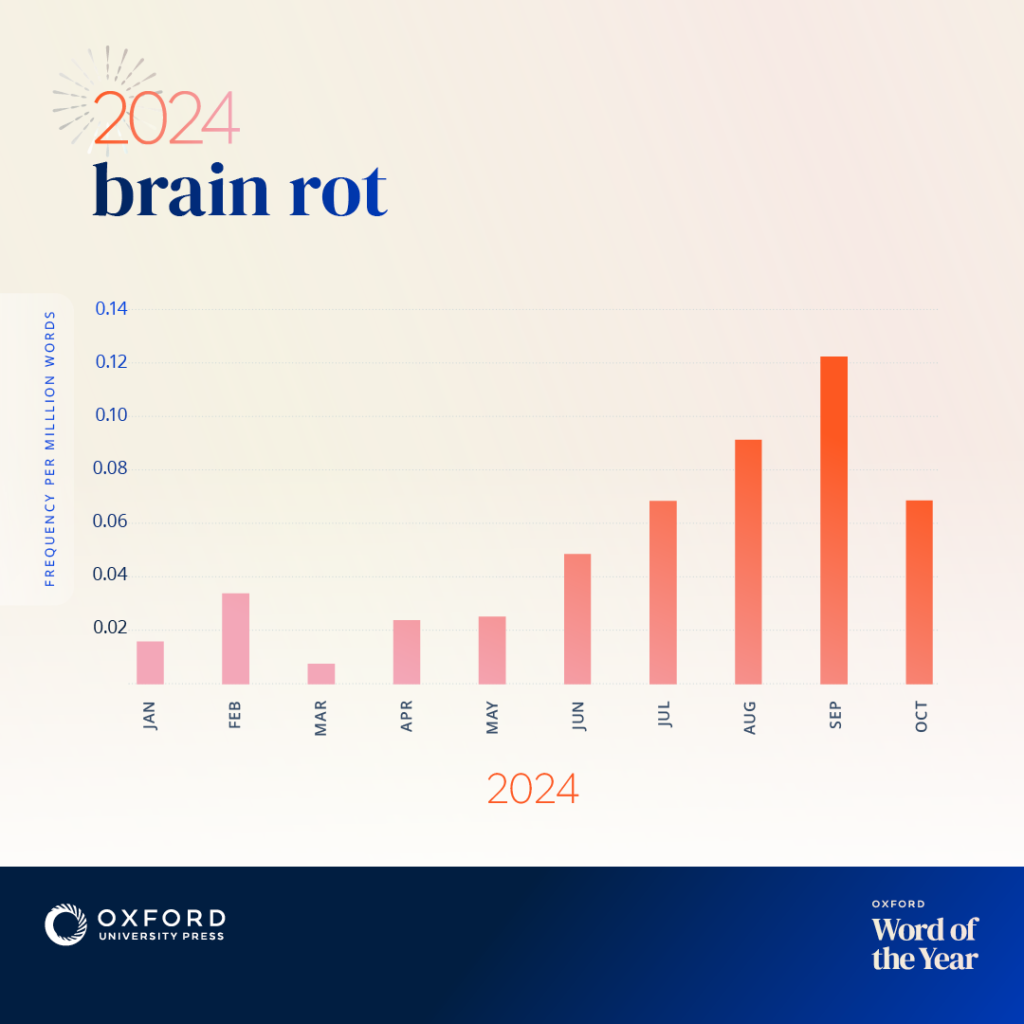The Meme That Became a Genre
Italian Brainrot began in early 2025 as a viral meme trend on TikTok and Instagram, centered around absurd AI-generated creatures with exaggerated Italian-American accents. They shout nonsensical phrases, vanish as quickly as they appear, and then resurface in endless remixes. Characters like Tung Tung Tung Sahur, Ballerina Cappuccina, and Tralalero Tralala became instantly recognizable icons across Gen Z and Gen Alpha communities.
By the end of 2024, “brain rot” had been officially named Oxford’s Word of the Year, reflecting a 230% surge in usage. This recognition cemented its role in pop culture and highlighted how humor and chaos were shaping the online landscape. From there, Brainrot naturally leaped into gaming.

Turning Viral Humor into Interactive Fun
By 2025, Italian Brainrot had evolved into one of the fastest-growing casual game genres. Unlike other formats, it thrives on absurdity, humor, and chaotic unpredictability. Despite its unconventional reputation, Italian Brainrot is proving to be a consistent driver of engagement across GameDistribution’s platform.
Top-performing titles in this genre include:
These games consistently deliver strong session lengths, particularly among younger male audiences. Their success comes from the way they combine casual, accessible gameplay with meme-fueled aesthetics, offering quick, entertaining, and shareable experiences.
“Brainrot taps into a specific kind of humor and energy that resonates with today’s players,” explains Calvin Man, Head of Content at GameDistribution. “It’s a smart way for publishers to expand their reach and stay relevant with a generation shaped by viral content.”

The Secret Behind Brainrot’s Viral Success
Italian Brainrot succeeds by leaning into the viral nature of meme culture. Players don’t just engage with the gameplay. They actively spread the experience across TikTok, Instagram, and YouTube Shorts, amplifying its reach far beyond the games themselves. This cycle of play and sharing creates a self-sustaining loop of discovery, where new audiences are constantly introduced to the genre through social content.
Part of the appeal lies in its casual design. Easy-to-play mechanics lower the barrier to entry, meaning players can start instantly without tutorials or prior knowledge. For publishers, this simplicity translates into higher accessibility and broader audience reach, especially across mobile and browser platforms where quick, frictionless sessions are key.
Equally important are the meme-driven aesthetics. The chaotic humor, exaggerated characters, and surreal energy perfectly match Gen Z’s internet-first culture. Unlike polished, story-heavy games, Italian Brainrot thrives on raw, unpredictable visuals that feel tailor-made for the attention economy. This ensures the content resonates not only as a game but also as a cultural talking point.
Finally, there is the shareability factor. Italian Brainrot games naturally generate funny clips, viral screenshots, and endless remixes. This organic visibility creates momentum without heavy marketing spend, making it especially valuable for publishers who want to benefit from trends without relying on costly acquisition campaigns.
Some critics frame brainrot games as frivolous or even wasteful, while players themselves often see them as harmless fun, a way to unwind and connect socially. In essence, Italian Brainrot is built to spread.
Key Markets Driving Brainrot’s Growth
Italian Brainrot games are seeing significant momentum in several high-engagement regions. According to GameDistribution data, the top markets include Turkey, Brazil, the Netherlands, Poland, and the United States.
The genre’s quirky, fast-paced design resonates particularly well with younger players in markets where meme-driven and offbeat casual content already thrives.
Key Lessons for Publishers and Developers
The rise of Italian Brainrot shows how trend awareness and cultural relevance can directly drive player engagement. Both publishers and developers have clear takeaways from its success.
For Publishers
Italian Brainrot demonstrates the importance of staying aligned with cultural and audience habits. Key lessons include:
- Target the right audience: Younger male players who enjoy fast, chaotic, and shareable humor are the strongest fit.
- Capitalize on high-engagement regions: Markets like Turkey, Brazil, and the U.S. already show strong traction. Localized campaigns and cultural adaptations can boost results even further.
- Bundle strategically: Position Italian Brainrot alongside puzzle, parkour, or other casual favorites to diversify offerings and strengthen portfolio appeal.
- Prioritize snackable, shareable content: Short-session formats with viral potential are essential for engaging Gen Z and Gen Alpha.
By embracing Brainrot-style humor and gameplay, publishers can capture a new wave of players while positioning themselves at the cutting edge of casual gaming.
For Developers
Brainrot also highlights the power of blending classic mechanics with viral trends. Starting with familiar formats like merge, clicker, or obstacle runs lowers the barrier to entry, while meme-inspired visuals and absurd humor inject freshness and unpredictability. Obby-style obstacle runs, for example, appear frequently because they are intuitive and popular, but when fused with Brainrot’s chaotic energy, they transform into something entirely new.
As Calvin Man explains:
“Combining well-known mechanics with fresh themes creates a powerful synergy. It lowers the learning curve for players while delivering something new and exciting. That’s a recipe for retention.”
Together, these lessons show how Brainrot is not just a passing trend but a case study for the future of casual gaming, providing both publishers and developers with a roadmap to capture attention, extend playtime, and drive growth through culturally relevant content.






